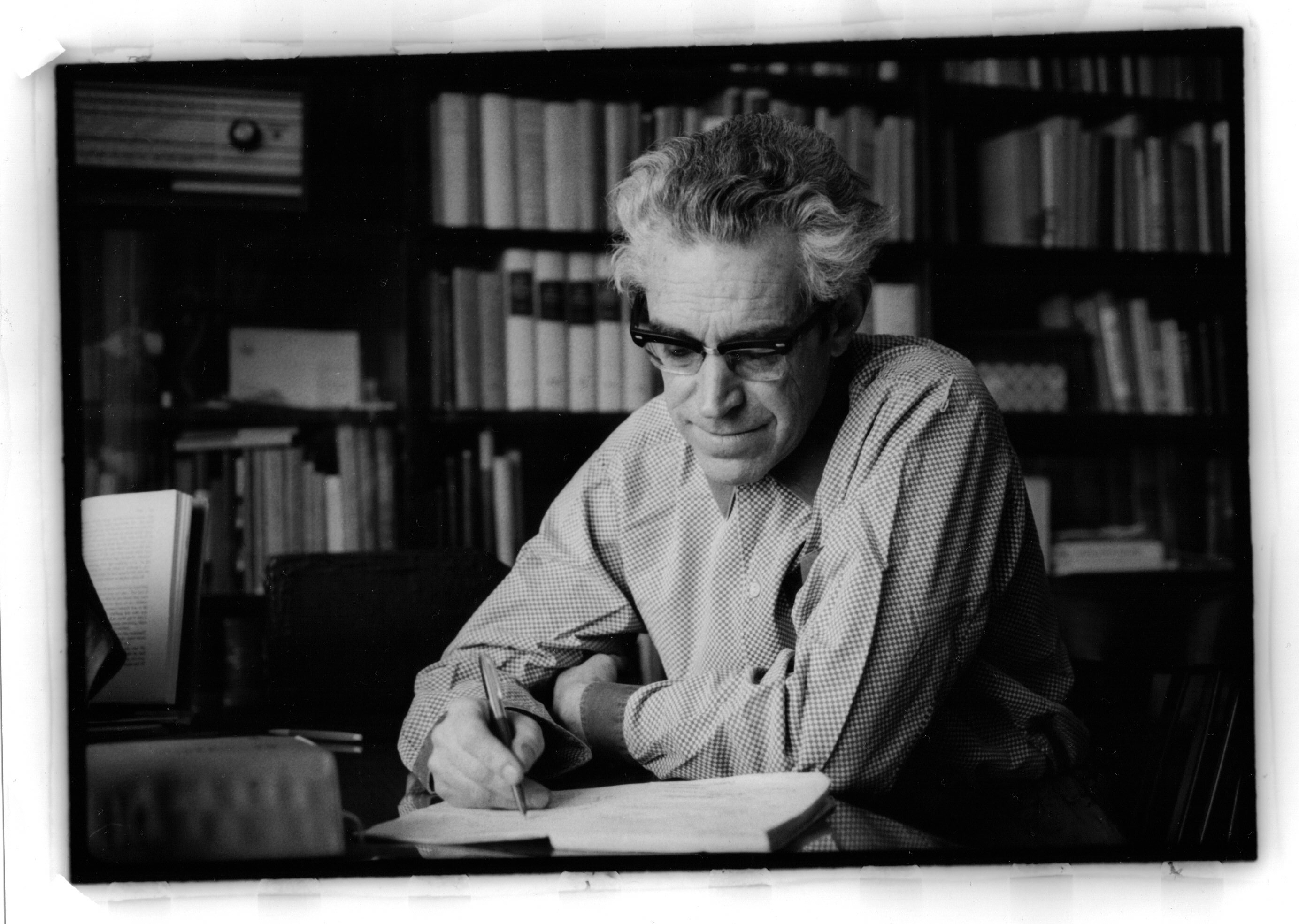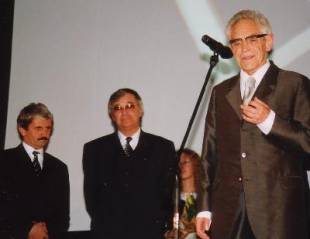Editorial
by guest editor Maria Kalinowa
Art in Society is focused in this
issue on the Slovak film critic Pavel Branko. Branko has been published
on various occasions in this journal. More importantly, he has been involved
for many years in reflections on film as an art form. Between 1948 and
1952, his film reviews appeared in such journals and newspapers as Kultúrny
život (Cultural Life), L'udovýchova (Vernacular Education),
Náš
film (Our Film), Pod zástavou socializmu (Under the Banner of Socialism),
Práca (Labor), Pravda (Truth), Slovenské pohl'ady [Slovak Views], Smena
(Shift), Svet socializmu (World of Socialism) and others.
In 1956, he began to work for the
newly founded bi-weekly journal Film a divadlo (Film and
Theater) as film editor.
Since 1956, Branko has focused largely
on documentary film. He was able to regularly attend the short-film festivals
in Karlovy Vary, Oberhausen, Leipzig and Cracow (occasionally as a jury
member), as well as the national Pula Film Festival in Yugoslavia.
From the second half of the 1950s
until the early 1970s, Branko published film criticism in Divadelní
a filmové noviny (Theatre and Film News), Estetika
(Aesthetica), Film a divadlo, Film a doba (Film and Time),
Filmové
a televizní noviny (Film and Television News), Kultúrny život,
Mladá tvorba (The Young Generation), Národná obroda
(National
Revival),
Nové slovo (New Word), Práca, Pravda
(Truth), Predvoj (Vanguard),
Reportér,Rudé právo,
Slovenský
jazyk a literatúra
(Slovak Language and Literature), Tvorba
(Creation)
and other Czech and Slovak publications.
But his film reviews appeared also
abroad, in such foreign media as Les Lettres Françaises (Paris)
and Telegram (Zagreb), and in a number of renowned
film journals, most notably Deutsche Filmkunst, Ekran
Warszawski (Warsaw), Film polski (Warsaw), Filmrutan
(Sweden),
Filmspiegel
(GDR), Filmstudio (FRG), Iskusstvo kino (USSR),
Kamera
(Warsaw)and
Sovetskij
ekran.
Pavel Branko taught at the VSMU
film academy in Bratislava, the less well-known - but not lesser -
"sister institution" of the Prague FAMU.
In this issue of
Art in Society,
a
summary of his book Mikrodramaturgia dokumentarizmu
(1991)
is presented in both English and German. Even though published nearly 23
years ago, Branko's analysis of documentary films and his theoretical conclusions
are still relevant. Microdramaturgy of documentarism
remains
useful although it focuses mainly on documentary films created in Eastern
Europe (Czechoslovakia, Poland, Hungary, Yugoslavia) prior to 1990. Students
at the film academies in Prague and Bratislava are usually familiar with
the book as it continues to be used as a text book.

 Pavel Branko in 1977. Photographed by his son Vladimir Branko. The photo
was
Pavel Branko in 1977. Photographed by his son Vladimir Branko. The photo
was
was initially
released by Vlado Branko to Wikimedia (cc-sa-1.0 license); now public
domain according
to information obtained from Vladimir ("Vlado") Branko.
Art in Society takes this
chance to highly recommend two other publications by Pavel Branko to our
readers (and to publishers outside Slovakia and the Czech Republic). His
Straty
a nálezy 1948-1998 was published in 1999. The book contains film
reviews and other texts focused on the cinema that Branko was forbidden
to publish between 1976 and 1989. Blacklisted, Branko published numerous
of these articles under the pseudonym Daniel Tisovecký, or by using the
names of other prominent authors who had the good luck of not yet being
blacklisted at the time.
Readers with a good command of Slovak
or Czech who are interested in the biography of Pavel Branko are referred
to his book "Proti prúdu (Against the Current)", published in 2011.

Pavel Branko, Mikrodramaturgia dokumentarizmu.
Bratislava 1991.
Pavel Branko, Straty a nálezy 1948-1998.
Bratislava : FTF VŠMU - Nár. centrum pre audioviz.
umenie, 1999. 225pp. -
ISBN 80-85182-52-1.
Pavel Branko, Proti prúdy (Against
the Current).
Bratislava : Marenčin PT : Slovenský filmový
ústav, 2011. 240pp. -
ISBN 978-80-8114-066-2
In addition to our focus on the
Slovak film theorist and film critic Pavel Branko, the present issue of
Art in Society pays tribute the painter, sculptor, video artist and incredibly
creative performer Tony Morgan (1938-2004).
It offers a review of a recent exhibition
of the Belgian painter and print-maker Luc Piron (b.1952), and discusses
sculptures and installations by the Swiss artist, poet and novelist Urs
Jaeggi (b. 1931).
Last not least, we invite our readers
cordially to debate A.B. Meadow's article on Malevich, Rodchenko
and - after WWII - Rauschenberg as pioneers of what became
Minimalist Painting.
**
|
*

Pavel Branko (r.) receiving the "Golden Camera" Award for his lifetime
achievement during the International Art Film Festival in Trenčianske
Teplice, in 2001. The director of the festival, Peter Hledik, is seen in
the center; to the left of him, the present prime minister of the
Slovakian Republic, Mikuláš Dzurinda. Photo: Igor Branko.
|